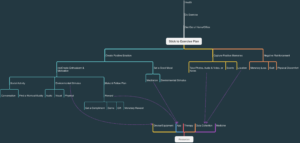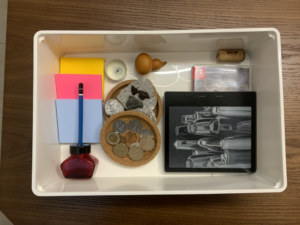W3 Brainswarming, Experiment & Cornell Box
Brainswarming:

Experiment:
My experiment uses selfies and selfie recordings to help people better understand their urge to procrastinate before exercising, their feelings around those urges, and contrast them with how they feel when they successfully stick to their exercise plan.
It consists of two parts: selfie collection and personal reflection.
Part One: Selfie collection (4 weeks)
The selfie collection portion of this experiment will take place over a four-week period in order to collect a broad range of representative samples from each participant, including examples of both procrastination and success.
How it works:
- Procrastination selfie: If someone has plans to exercise, but at the last minute decides not to go, they have to take a selfie of themselves to document how they feel at that moment. It’s just a picture of their face – no reflection or extra work required.
- Success selfie: If someone succeeds in exercising, when they’re experiencing a moment of elation, they need to record themselves talking about how they feel – either a video or a voice message.
These are the only rules. After collecting these images for about four weeks, we move on to Part Two.
Part Two: Reflection
When we have at least 12 different selfies, I will put them together for the participant and show them one by one. We will reflect on them together, and I will ask them questions about the day in question: Do you remember what day this was? What did you do that day? What do you think you’re feeling here? Why did you end up not working out? How did you feel after working out? Questions like that.
Through this process of reflection, I want to work with them to better understand the “call of procrastination” and also what helps them get over those humps. I want to see if they notice a difference in themselves when comparing their procrastination selfies vs. success selfies, or if they feel the same either way. And I want to see if either form of documentation encourages them to change their habits (i.e., does having to document an act of procrastination make them less likely to procrastinate, or will the guilt make the urge to procrastinate worse? Do the success selfies inspire you, or is it only an in-the-moment type of thing?).
Initial selfie samples from Part One

=======================================================
Cornell Box

My Cornell Box includes three sections: documentation, discovery, and habits
- Documentation: How I record actions related to procrastination – What I want to achieve, or what I didn’t achieve
- Candle: The candle is my own personal “pomodoro technique” – it burns for four hours, and I use it to focus.
- Discovery: I’m exploring different ways to collect data and create memories related to procrastination.
-
- I want to be able to connect with and understand my procrastination, but digital data doesn’t mean anything because I can’t feel it.
-
- So I want to create something physical that has meaning, like currency you collect from a trip, or rocks from the beach.
- Habits: These are some of the things I procrastinate on.
- I procrastinate on reading.
-
- Playing video games is one way I procrastinate. Maybe you can’t believe it, but I also procrastinate on finishing the games, too.
=======================================================
Researchers in Procrastination Field
1. Dr. Tim Pychyl – Associate Professor of Psychology at Carleton University,
Canada
Research focus: Procrastination and its relation to personal well-being
2. Dr. Joseph Ferrari – Professor of General Psychology at DePaul University,
recognized as one of the world’s most renowned experts on chronic
procrastination (author of multiple books, podcast host)
Research focus: Chronic procrastination, self-handicapping, attitude change
3. Dr. Fuschia Sirois – Director of Recruitment, Department of Psychology Sheffield
University
Research focus: Procrastination and perfectionism as risks factors for health
Related Posts
Leave a Reply Cancel reply
You must be logged in to post a comment.
Kat Sullivan
Adam Colestock
Helen (Chenuan) Wu
Christina Lan
Dorian Janezic
George Faya
Julia Myers
Kelsie Smith
Michael Morran
Po-Wen Shih
Liu Siyan
Fisher Yu
—
Craig Protzel
Christopher Wray
Haoqi Xia
Hayden Carey
Katherine Nicoleta Helén
Maria Maciak
Parisa Shemshaki
Sakar Pudasaini
Skyler Pierce
Steven Doughty
Yiqi Wang
—
Andrew Lazarow
Benoit Belsot
Enrique García Alcalá
Hongyi Zhang
Jay Mollica
Li Shu
Teddy (Jian) Guo
Monika Lin
Wenye Xie
Yiru Lu
